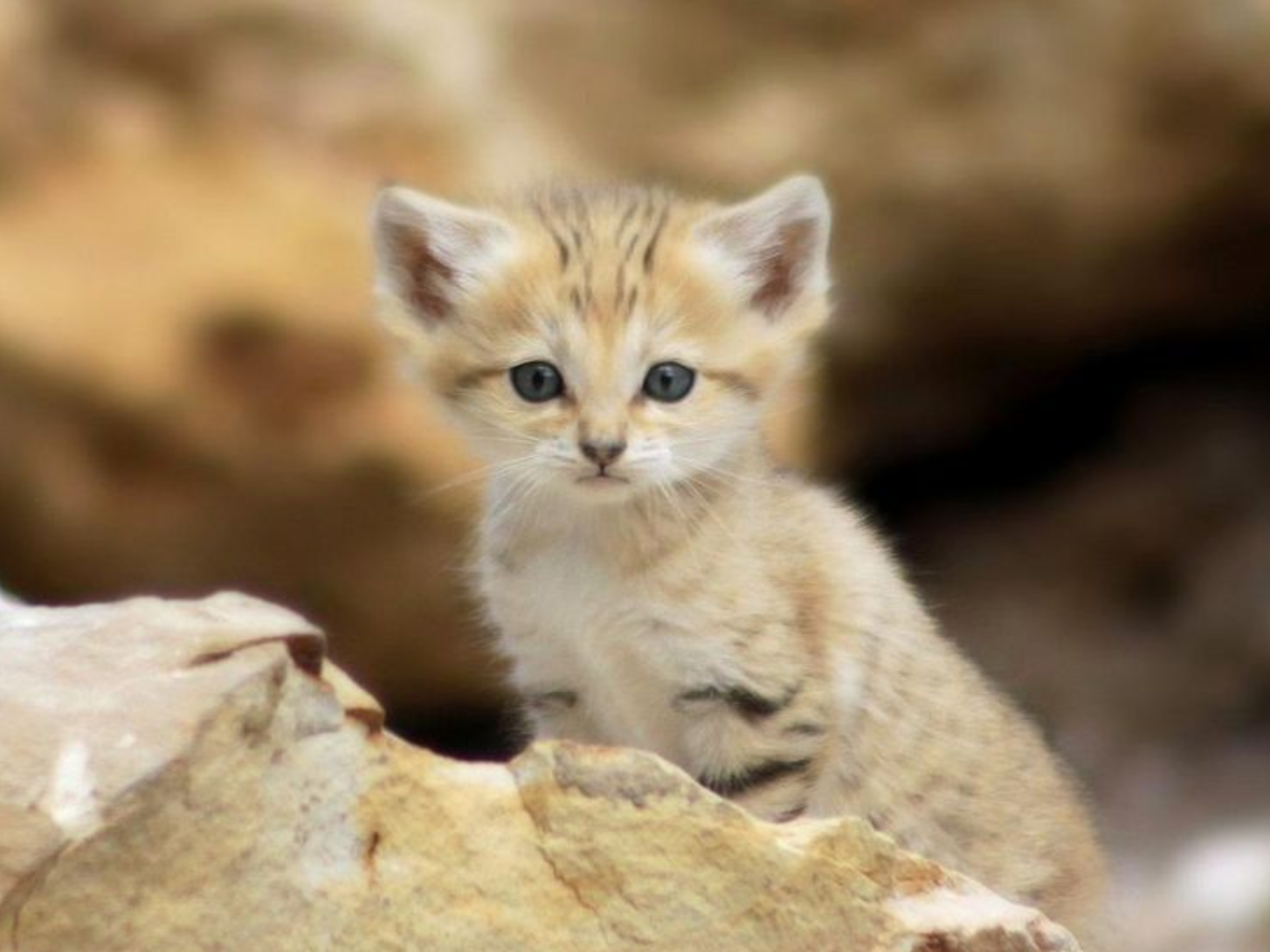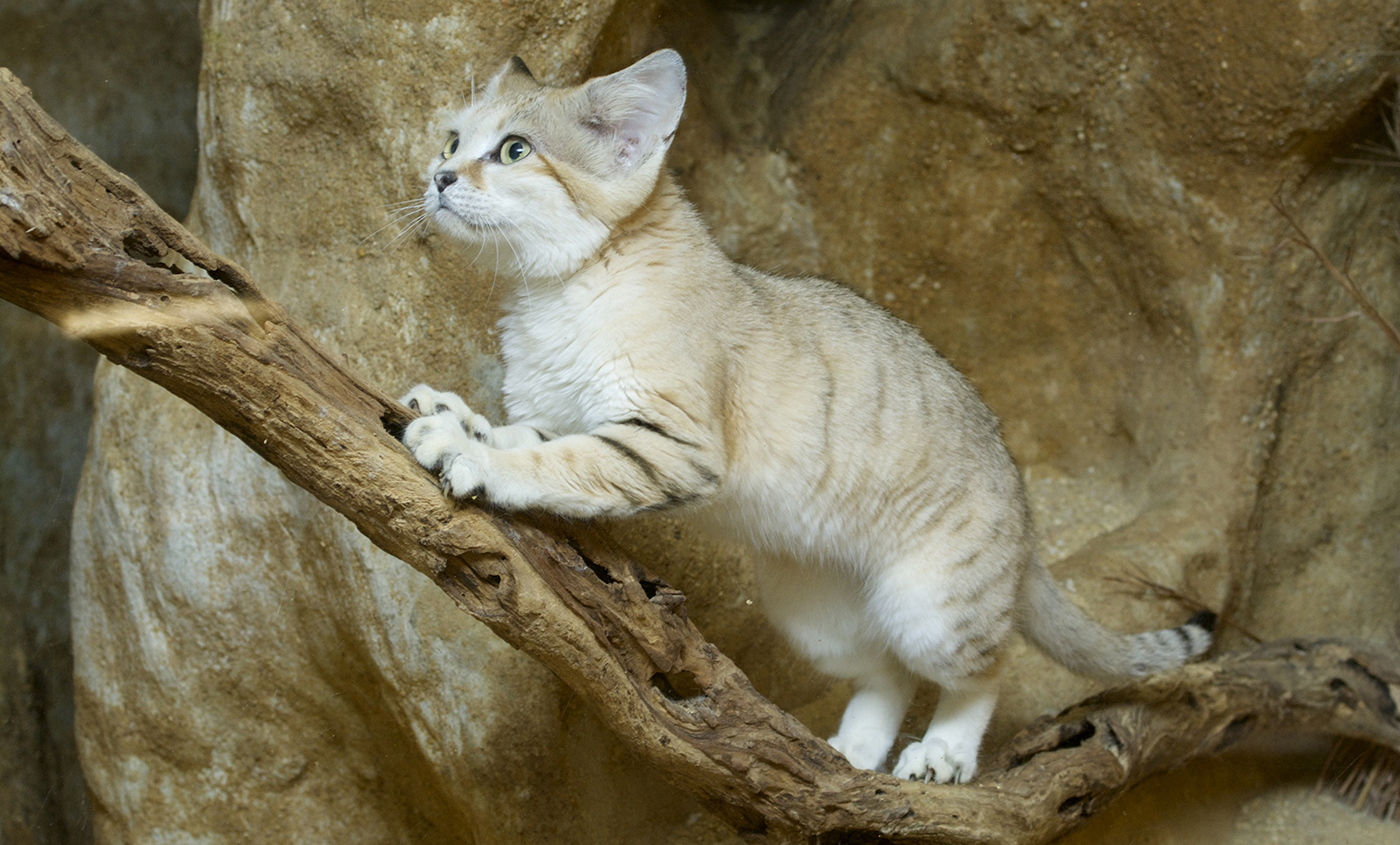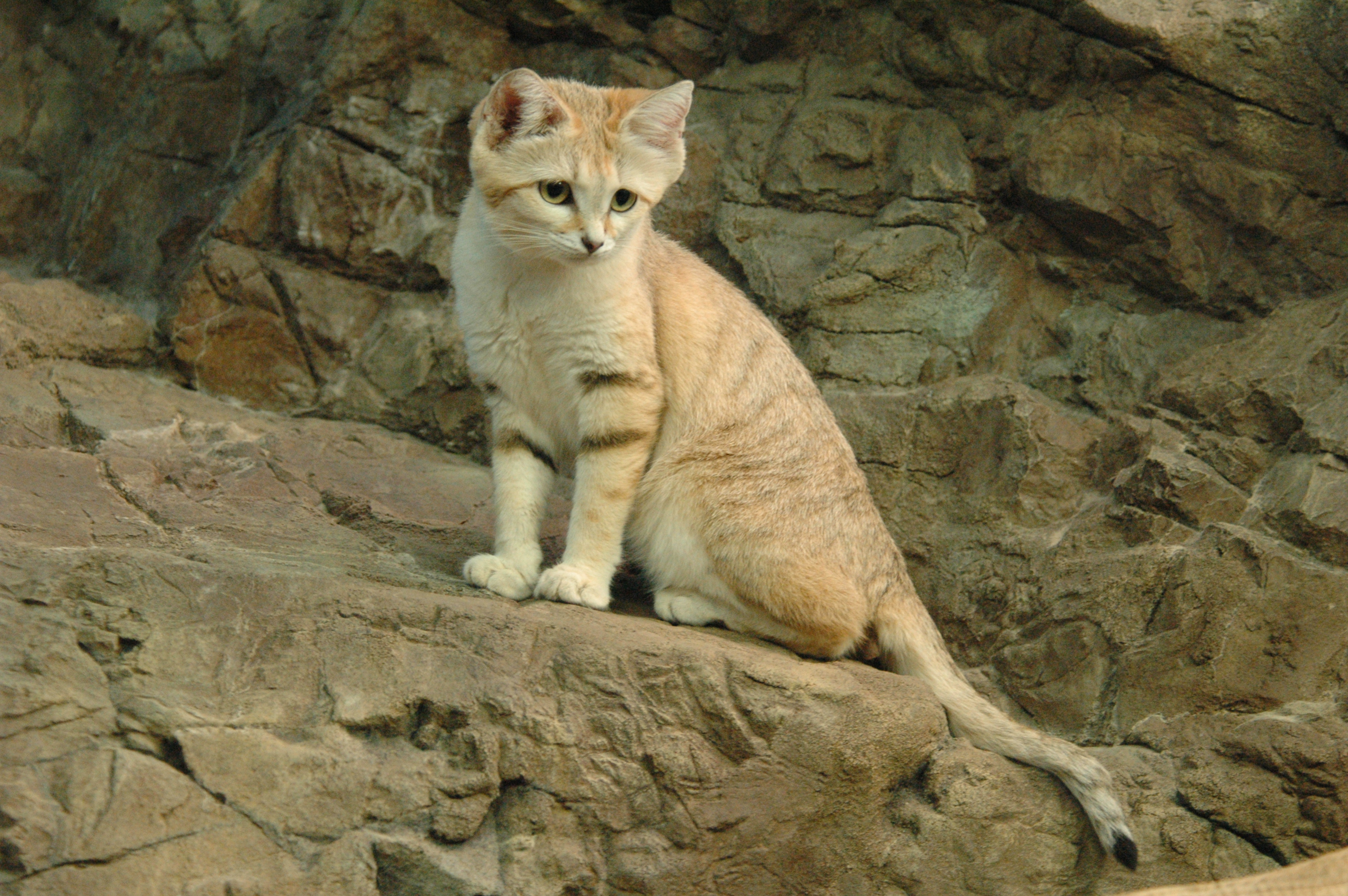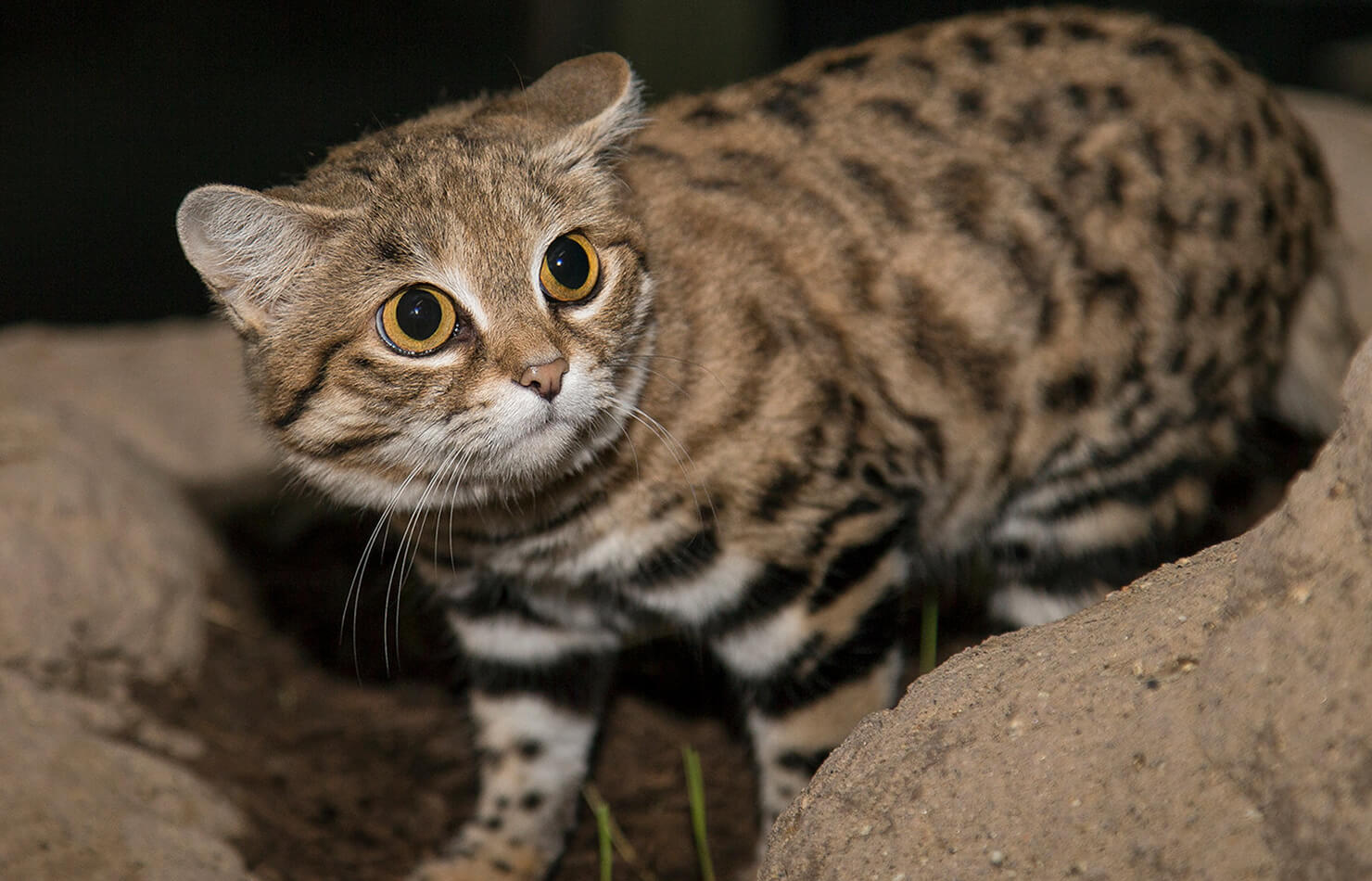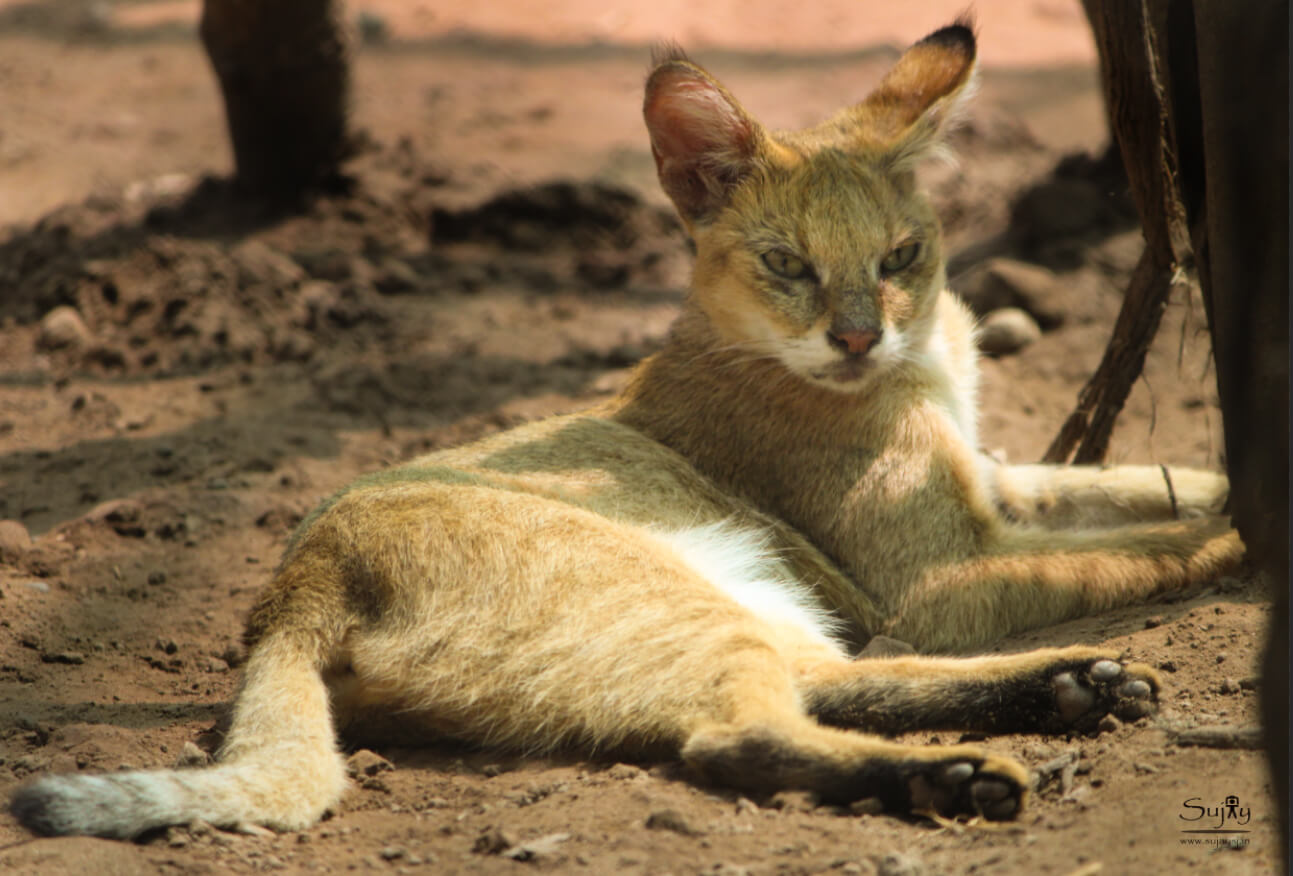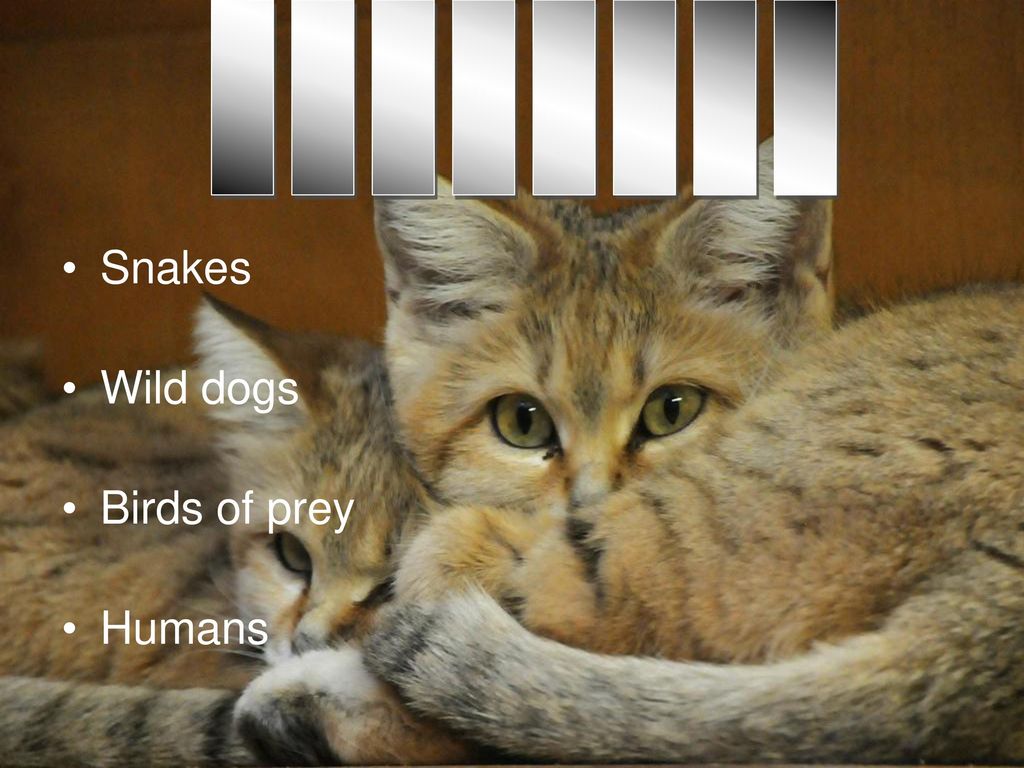Sand Cats Habitat Description

They manage to find food there where it is in principle very little.
Sand cats habitat description. They prefer flat or undulating terrain with sparse vegetation retreating into burrows during extreme conditions to. The Sand Cat Felis margarita distribution is across the desert ranges of the Sahara in Africa the Arabian Peninsular and southwest Asia. And in parts of central Asia.
Its 57 cm short ears are set low on the sides of the head aiding detection of prey moving. They were territorial and hunted an area with a range of up to 10 miles 16 kilometers. Residential and commercial development biological resource use human pressures habitat loss and cross breeding with domestic cats.
Sand cats prefer a very dry arid habitat with little vegetation for which they are well adapted. Hairy foot pads help with traction on the loose sand and to insulate it from the extreme hot and cold temperatures of the desert. The Sand cat hides leftover food in the sand.
The Sand Cat is a small wild cats about the size of a domestic cat. It is one of few wild cat species that occupies true desert habitat. Africas Sahara desert throughout the Arabian peninsula.
In the northern areas between the Aral and Caspian seas the sand cat occurs only sparsely in the more claylike desert soils of the Ustyurt and Mangyshlak regions. Number of sand cats decreased drastically in the past couple of decades due to habitat loss poaching recreational hunt and introduction of new species which compete for the prey and spread diseases. The sand cat also known as the sand dune cat is a small wild cat that inhabits sandy and stony deserts far from water sources.
And allactaga tetradactyla and hamsters but also often takes sand grouse pterocles sp larks eg. Reddish streak that runs from its eyes across its cheeks. The sand cat is the only cat species that lives mostly in desert environments.


